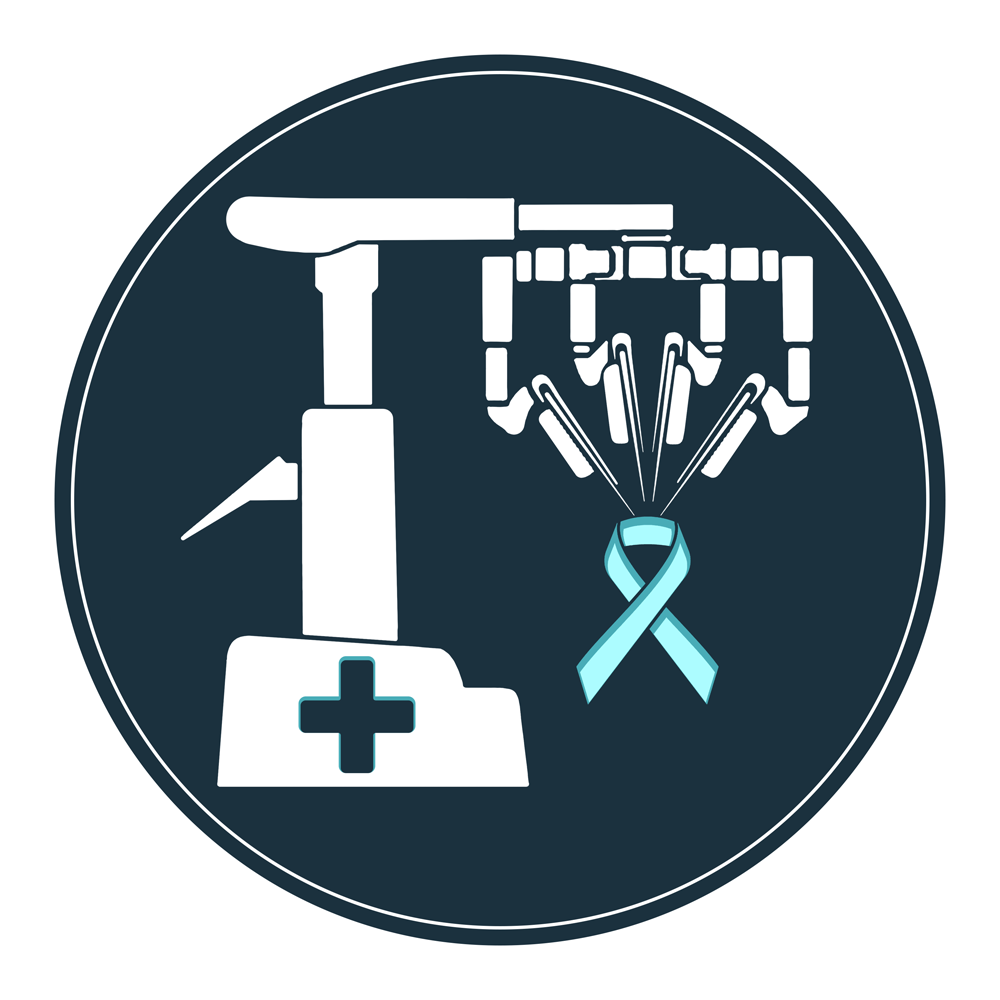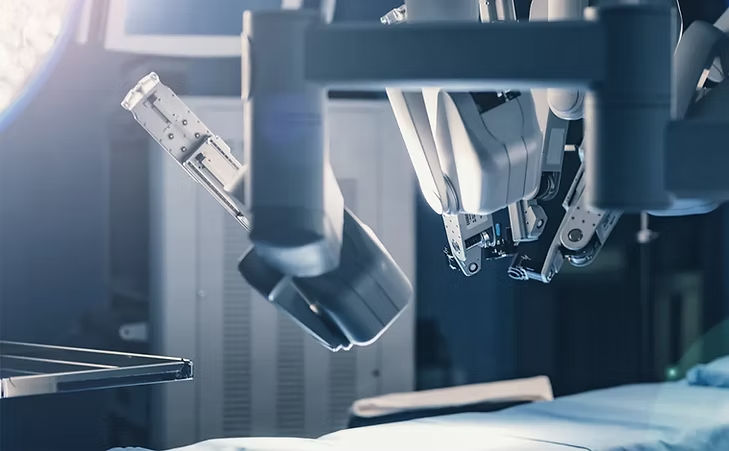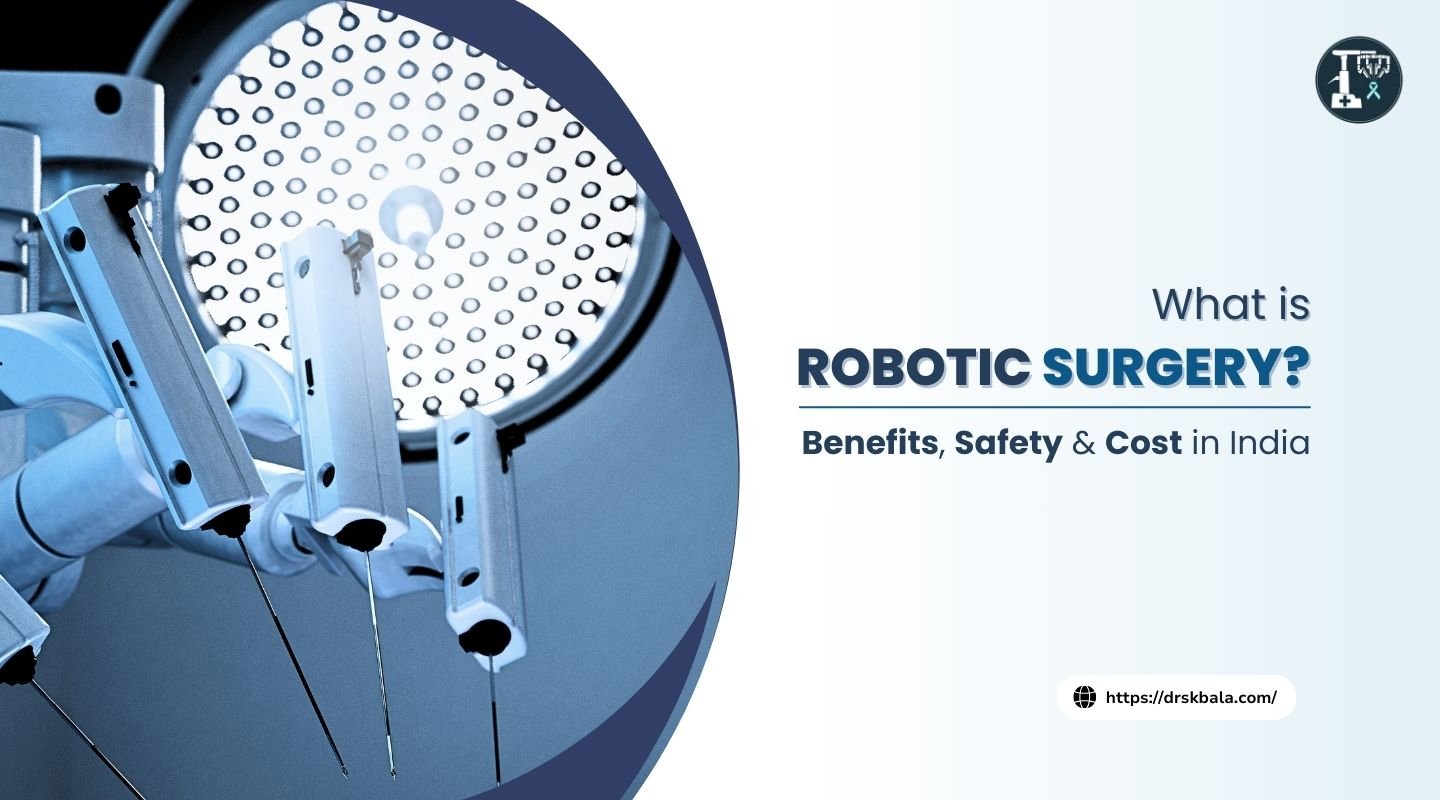Robotic Cancer Surgery: Safer, Less Painful, and More Effective
What if cancer surgery didn’t mean weeks of pain, large scars, and a long recovery? That’s the shift happening right now with robotic cancer surgery. For decades, patients had two main choices:
- Open surgery with large incisions and longer recovery.
- Laparoscopic surgery with smaller cuts but limited flexibility.
Today, technology has changed the landscape. With robot-assisted systems, surgeons can combine the precision of open surgery with the recovery benefits of minimally invasive techniques.
Is robotic surgery truly the future of cancer care? Here’s a closer look at why more patients and doctors are turning to it with confidence.
Table of Contents
- • What is Robotic Cancer Surgery?
- • Benefits of Robotic Cancer Surgery
- • Lesser-Known Facts Patients Should Know
- • Robotic Surgery vs Traditional Surgery
- • Which Cancers Can Be Treated with Robotic Surgery?
- • Challenges & The Road Ahead
- • Why Robotic Surgery is the Future of Cancer Treatment
- • Quick Facts About Robotic Surgery
- • Ready to Explore Advanced Cancer Care?
What is Robotic Cancer Surgery?
Robotic cancer surgery is a minimally invasive surgical technique where the surgeon controls robotic instruments through a console. The most widely used system is the da Vinci Surgical System, which enhances the surgeon’s vision, precision, and dexterity.
Here’s the key point: the robot never operates by itself. Every movement is guided by the surgeon’s hands. The system acts like an extension of the surgeon, allowing more accuracy in complex areas of the body.
Think of it this way: the robotic arms act like a GPS for the surgeon’s hands, navigating difficult areas with remarkable control.
Read More: What is Robotic Surgery? Benefits, Safety & Cost in India
Benefits of Robotic Cancer Surgery
If you’ve heard of robotic surgery before, you probably already know about the main benefits. Patients experience:
- Smaller incisions → minimal scarring.
- Less pain after surgery.
- Reduced blood loss during procedures.
- Faster recovery — many patients can walk the next day.
- Shorter hospital stay → lowers infection risk and overall costs.
For patients, this often means going home in just a few days and getting back to daily life much sooner than with traditional surgery.
Read More: Advantages & Disadvantages of Robotic Surgery
Lesser-Known Facts Patients Should Know
Did you know robotic arms can rotate 360 degrees? That means they can move in ways human hands and even laparoscopic instruments cannot.

Here are some more facts many patients don’t realize:
- 10x magnification with 3D vision → surgeons see tiny structures in extraordinary detail.
- Better cancer clearance → tumors can be removed more completely while sparing healthy tissue.
- Ideal for elderly patients → less strain, fewer complications, and quicker mobilization.
- Lower risk of hospital-acquired infections → thanks to shorter stays and smaller wounds.
- More precise suturing → especially valuable in delicate surgeries like rectal, bladder, or prostate cancer.
These advantages explain why robotic surgery is increasingly being used in complex cancer procedures that once required large, invasive operations.
Robotic Surgery vs Traditional Surgery
| Feature | Open Surgery | Laparoscopic Surgery | Robotic Cancer Surgery |
| Incision Size | Large cut (15–20 cm) | Small cuts (0.5–1 cm) | Small cuts (0.5–1 cm) |
| Precision | Limited by hand stability | Limited range of motion | 360° robotic movement, high precision |
| Vision | Standard 2D | 2D/limited 3D | 3D HD vision with 10x magnification |
| Blood Loss | Higher | Moderate | Minimal |
| Recovery Time | Weeks | Shorter | Fastest |
| Cancer Clearance | Good | Variable | High precision, better outcomes |
| Patient Comfort | More pain | Less pain | Least pain, faster mobilization |
Which Cancers Can Be Treated with Robotic Surgery?
Robotic-assisted surgery is now used in many types of cancers, including:
- Gastrointestinal cancers → colon, rectum, stomach, esophagus.
- Liver and pancreatic cancers → selected cases requiring delicate resections.
- Urological cancers → prostate, kidney, bladder.
- Gynecological cancers → ovarian, cervical, uterine.
- Thoracic cancers → certain chest and lung tumors.
Imagine having major colon or stomach surgery, and instead of being bedridden for a week, you’re walking the next day. That’s the reality for many patients after robotic surgery.
Challenges & The Road Ahead
Like any new technology, robotic cancer surgery in India has its challenges.
- Cost → The upfront expense of robotic systems makes surgery more costly for now.
- Availability → Robotic surgery is still limited to select advanced hospitals and metropolitan cities in India, which means not every patient has easy access yet.
- Training → Surgeons need advanced training and certification to perform robotic procedures.
But here’s the hopeful part: as more hospitals adopt robotic systems and more surgeons train in the technique, costs are expected to come down. Future generations of robotic systems may also integrate AI, real-time imaging, and machine learning to make surgeries even safer.
Why Robotic Surgery is the Future of Cancer Treatment
As a surgical oncologist with nearly two decades of experience, I believe robotic-assisted cancer surgery is not just today’s innovation — it’s tomorrow’s standard of care.
It combines everything patients want: safety, effectiveness, less pain, and faster recovery. At the same time, it gives surgeons the tools to perform complex cancer operations with greater confidence and accuracy.
In the coming years, robot-assisted surgery will likely become the preferred option for abdominal, thoracic, and pelvic cancers. With growing awareness and expanding technology, access will become more universal and more economical.
Robotic cancer surgery isn’t a distant dream. It’s happening right now — and it’s transforming outcomes for patients every day.
Quick Facts About Robotic Surgery
1. Is robotic surgery safe?
2. Which cancers can be treated with robotic surgery?
3. Who is a candidate for robotic surgery?
4. Do robots perform surgery by themselves?
5. What is the future of robotic surgery?
Ready to Explore Advanced Cancer Treatment?
Robotic surgery is giving cancer patients new reasons to heal faster and live stronger. If you or your loved one is exploring advanced treatment options, you don’t need to look beyond Kolkata.
👉 Book a consultation with Dr. S. K. Bala, Kolkata’s leading robotic cancer surgeon, and discover how advanced surgery can improve outcomes and quality of life.





